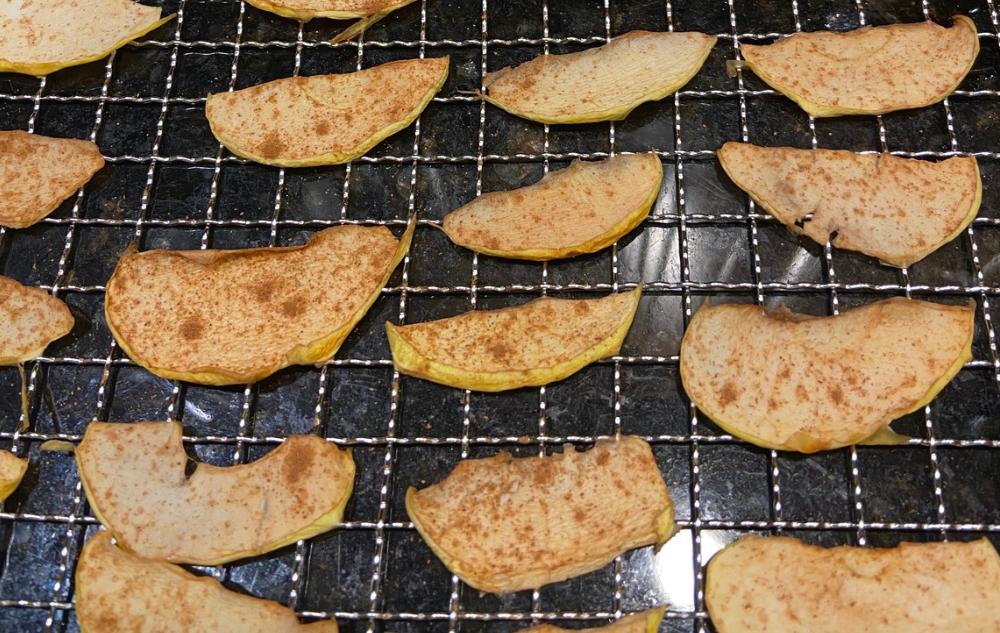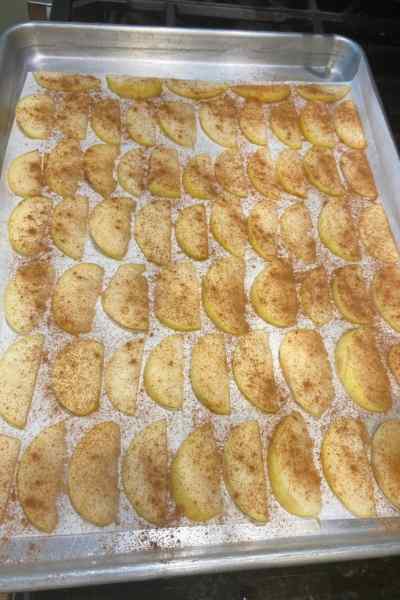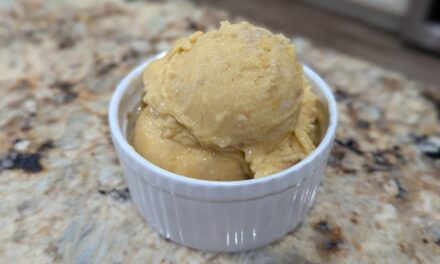Makes about four dozen apple chips
Dehydrating apples are a healthy and fun way to preserve them for school/work lunches, hikes, bike rides, or whenever you want a quick, nutritious, and sweet snack.
I first dehydrated apples for a planned bicycle ride on the Greater Allegheny Passage from Pittsburgh, PA, to Cumberland, MD, a few years ago. The rail trail bike ride, 150 miles over three nights and four days, required nutritional meals and snacks. Since we were camping out along the way, I did a lot of research on bike packing. I came across a recipe from Eating Well for dehydrating apples with cinnamon. Since it was the middle of September and apples were abundant, I decided to try it. The dehydrated apples were dried in a low-temperature oven over several hours. They were so easy to make, plentiful, and deliciously crisp.
Since then, I have purchased a dehydrator, which I love. You can find dehydrators online starting at $35.00. I learned from a gentleman at the farmers market that you want a dehydrator with at least 5-10 trays; the more trays, the better. I took his advice and bought a ten-tray. This is terrific advice if you plan to dehydrate a lot of produce in season. Also, if you plan on storing your dehydrated food for an extended time, research how to do this safely. Cooperative extensions such as the University of Georgia College of Family and Consumer Sciences provide such information.
What are the differences between using your oven and using a dehydrator? Both are effective methods, but a dehydrator has temperature settings more optimal for dehydrating that will prevent your food from burning. An oven, on the other hand, is incapable of operating at a temperature setting as low as 135° Fahrenheit, so the fruit, which dehydrates at a higher temperature in a shorter time frame, could burn if left too long.
According to the manufacturer of the dehydrator that I purchased, the time required to dehydrate food may vary based on the:
-
- Thickness of produce
- The number of trays or baking sheets used to dry the food
- The amount of food being dehydrated
- The moisture or humidity in your environment (I found that bananas take a longer time to dehydrate)
- Your personal preference for drying your favorite produce
Here are some recommendations to help make your dehydrating experience a success:
-
- Check your food every hour, especially if you are using your oven to dehydrate.
- Rotate your trays or baking sheets if you notice that your food is drying unevenly.
- Pretreated food will give the best drying effect.
- Label dried food contents, the date, and the length of drying time for date use and storage.
- Correct storage after drying will also help to keep good quality and save nutrients.
To dehydrate apples in an oven:
- Position your oven racks to the upper and lower third in your oven and preheat the oven temperature to 200° Fahrenheit.
- Line 2 large baking pans with parchment paper to help prevent dried apples from sticking to the pan.
- Prepare apples as you would using the directions below for dehydration.
- Check apples every hour, removing the trays, and turning each slice over. Place the apples back into the oven, dehydrating for another hour for soft dried apples or two hours for crispy apple chips. Depending on your oven heating temperature, humidity, type of apple you use to dehydrate, and thickness, it may require a longer dehydrating time.
To dehydrate apples in a dehydrator:
Temperature settings for pliable apples are 145 degrees for a drying time of approximately 5-6 hours. For crunchy apple chips, the drying time will be longer. The manufacturer’s manual will give you suggested drying instructions for other produce and meat you can dehydrate.
Ingredients:
- 2 large apples, cut into rings, wedges, or chips (my favorites are Honeycrisp and Fuji)
- 1/2 cup freshly squeezed lemon juice
- 4 cups of filtered water
- Cinnamon
Instructions:
- Core and slice apples into ⅛” to ¼” thickness. Remember that the larger your pieces of fruit are, the longer it will take to dehydrate them. I prefer to leave the skin on my apples, but you can peel your apples if that is your preference.
- Add the prepared apples to a bowl of water and lemon juice for 30 minutes to help prevent the apples from turning brown.
- Once all the apples have been prepared and added to the lemon bath, drain them and gently dry them with a towel.
- Place the apples on the dehydrating trays in a single layer, leaving space between them.
- Sprinkle with cinnamon
- Place all trays into the dehydrator, setting the drying temperature and approximate drying time. The apples should be easy to break, similar to a potato chip.
Recipe compliments of OPL Master Naturalist and Home Chef Yvonne Dwyer













